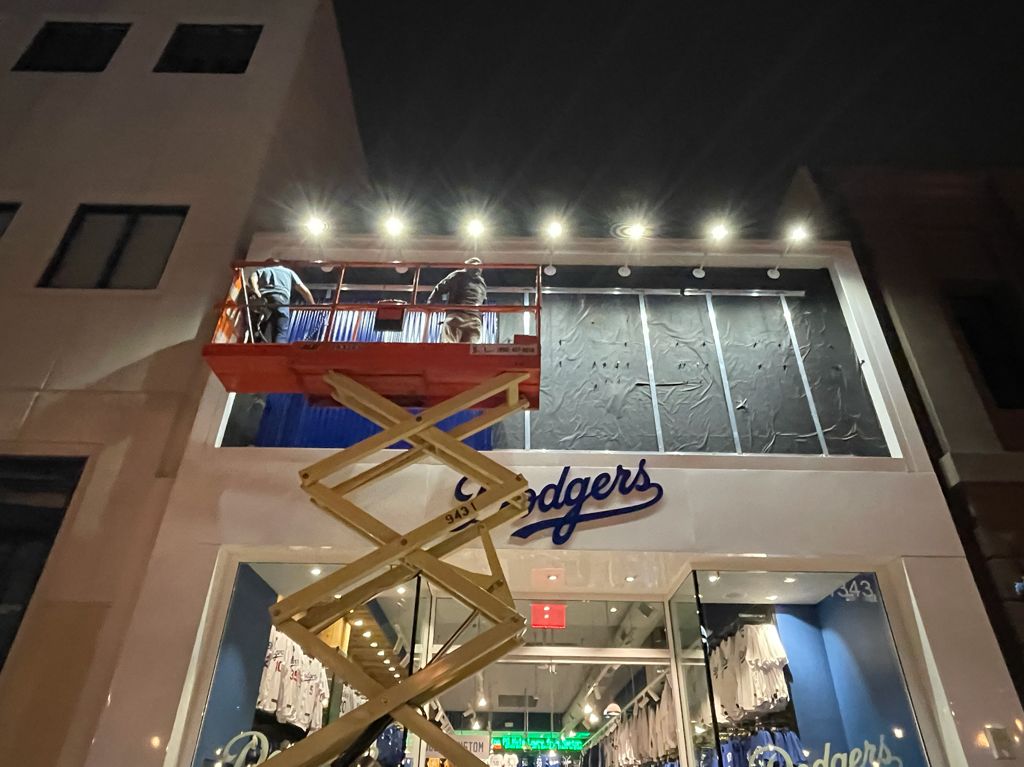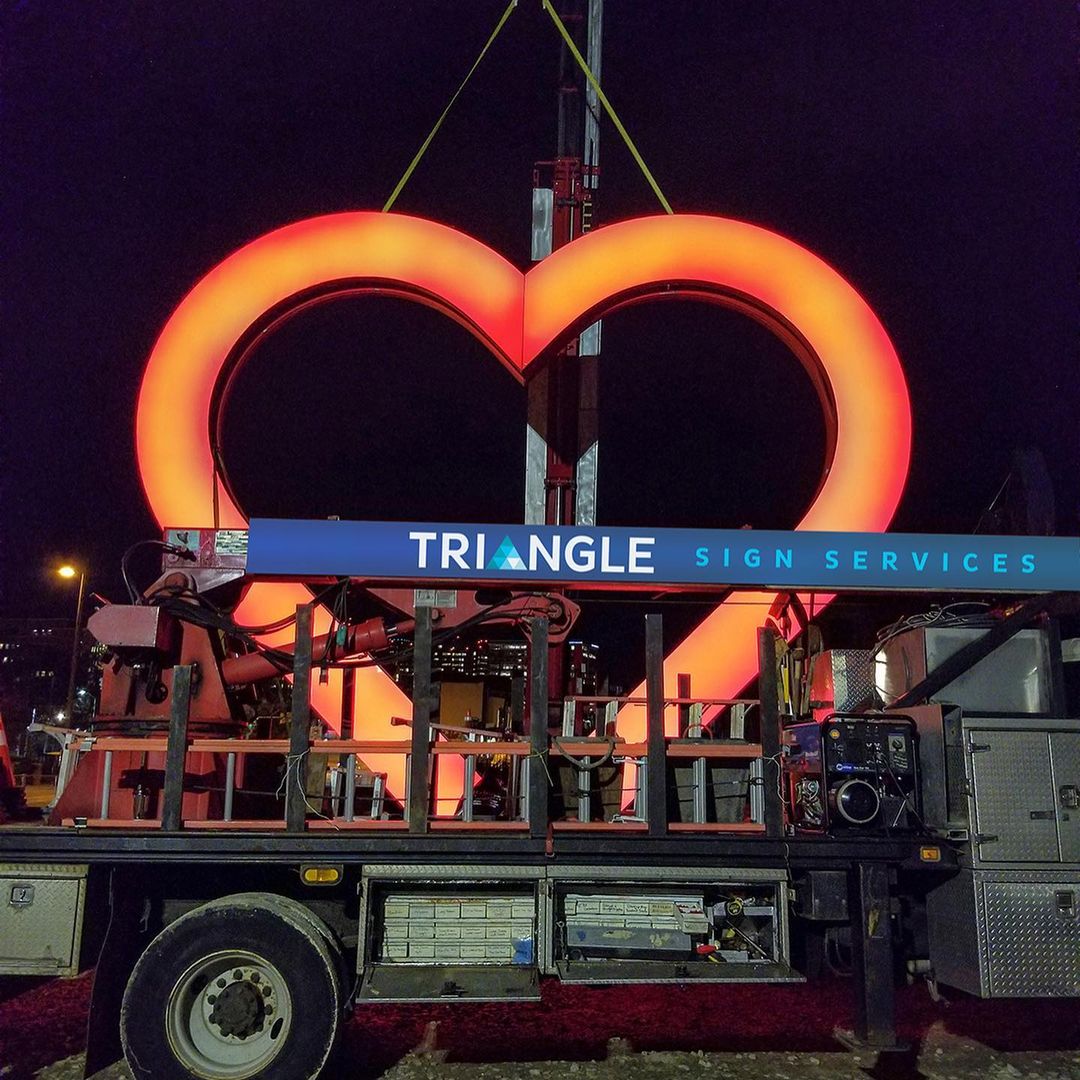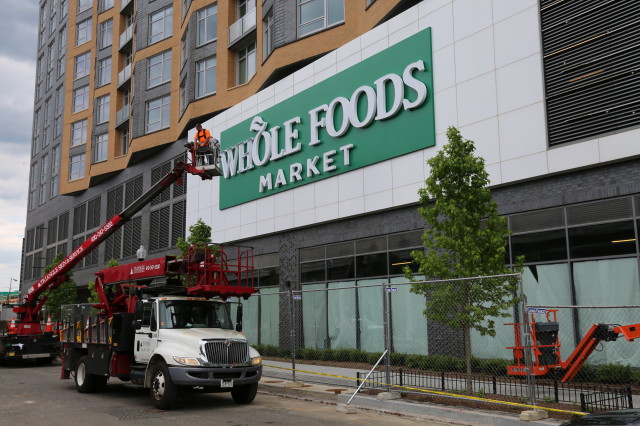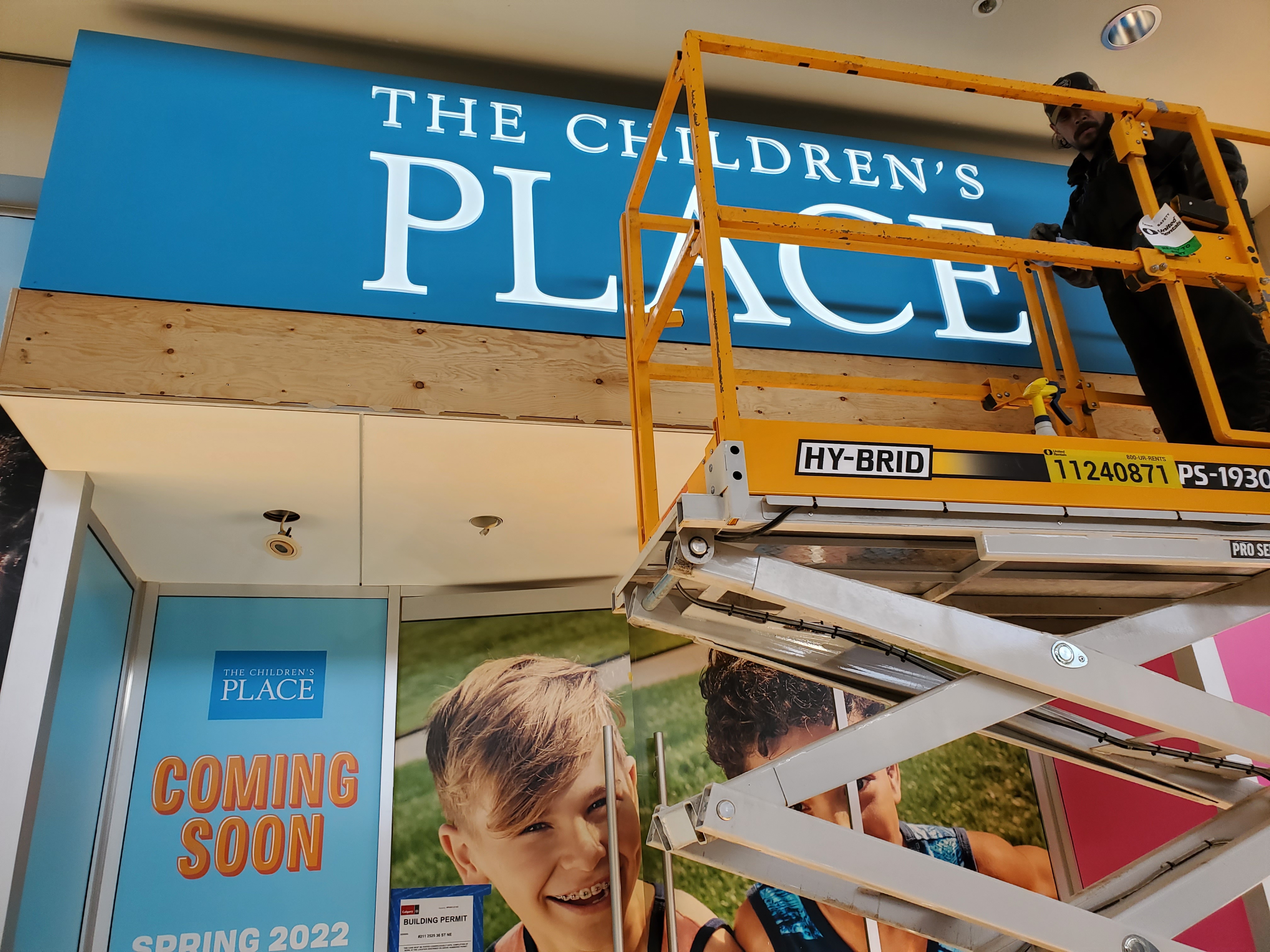Signage and Lighting Service 101
Maintenance, Service, or Repair?
Figuring out if you need maintenance, service, or repair may be the eternal question in the Facility Management world. Fret not! We are here to explain what each term means, and how to avoid the costliest options.

What is a repair?
Repairs are required when some part of the form or structure is physically broken, malfunctioning, or unattached. In signage, this could be a cracked sign face, broken part of the hanging components, or a portion, or all the signage lighting is out, which indicates an electrical issue. In lighting, this could be broken or bent fixtures. Either way, it means there is something intrinsically wrong with the element that requires a fix, partial replacement, or in some cases, full replacement. Sometimes this happens due to natural wear and tear of simply existing, other times it’s related to an outside source—like a tree falling on your sign.
Ensuring you stay on top of repairs, you’re able to preserve your brand image when a sign or light goes out. There’s nothing more blatant that says you’re not paying attention to your business when a part of your sign goes out—even though we know in the industry this can easily go past our notice during our day-to-day proceedings. But repairs can be costly—it means that something has been neglected to the point of breaking and can mean opening a can of worms once you dive into the surface issue because there’s usually a lot more underlying than what the eye can see.
So, what if you could prevent most repairs? What if your brand image never had to suffer another dingy sign face or light outage? What if you could save money by being more proactive, rather than reactive to repairs?

What is maintenance?
Maintenance is any regular, scheduled service required to maintain your facility. Think of it like when your car’s “maintenance required” light comes on—usually it means that your oil needs changing, and your tires need rotating. It’s the same idea with your signage and lighting—only there’s not a nifty light telling you it’s time for a tune-up. Instead, we must rely on keeping an eye on the calendar or being—wait for it—prepared with pre-scheduled service appointments. So, what sort of maintenance can you have performed on your facilities to stay ahead of any issues? In signage and lighting, this could be regular cleanings to ensure the sign looks as good as new throughout the year, and electrical checks of your signage and lighting to ensure that anything that is about to go out is tackled before it becomes…well, tacky. In other words, you’re staying ahead of any problems before they become a problem. Proactive instead of reactive.
Maintenance will protect your assets for a longer period. One example of this is if your business has an awning. Getting your awning regularly cleaned is crucial to extending the lifetime of the product—dirt and residue buildup on an awning eats away at the protective coating—so, the longer it stays dirty, the faster your awning will wear out, which means a costly replacement sooner than you’d want.
And lastly what regular maintenance does for your business is preserve your brand image. It may take days or weeks for your employees to notice a sign outage or break—and then relying on them to then report that problem? What your employees don’t notice, your customers definitely will. Your sign and lighting are the main components that invite your customers in and make them feel safe and supported. Neglecting problems like this only hurts your brand image and customer loyalties.

What is service?
Service is the umbrella term for repair and maintenance. It’s the catch all for those two terms. You can have regular service, on-call service, or emergency service. Each service call may require regular maintenance, or it may require a repair or a replacement. Certified and experienced service technicians will give you a quote for the services that best suit the issue they were called to address. Sometimes if a repair is one of those “can of worms” scenarios we discussed above, you might also get a quote for a full or partial replacement.
A good, national service provider pulls together all the pieces of a maintenance and repair program to help determine the best ways to maintain the assets, save money, and advise when a full replacement is preferrable to spending money on repairs. The sort of repair and maintenance budget you have set up will determine how you move forward with the service of your facilities.

What kind of service do I need?
Most facility managers tend to require repairs, because they neglect, or choose to skip over regular maintenance with their service provider (are you guilty of this?). This is understandable in the mentality of “if it ain’t broke, don’t fix it.” But the reality is, the more you neglect your facility, the more likely that an issue will arise that will cause a need for a service or repair. Then, when that happens, you’ll have additional fees that don’t usually come along with regular, routinely scheduled maintenance. In the long run, you’ll stay under budget by having regularly scheduled maintenance and checks. It may cost you now, but better than having it cost you more in the future.
Your R&M Budget
In facility management, you have a repair and maintenance budget, otherwise known as an R&M budget. What happens most often is the bulk of that budget goes to repairs as opposed to maintenance. This approach is the more costly of the two—even though one year your numbers may be down, consistently across the board repair costs more than regular maintenance and preventative measures, even though you may seem to be spending more because you’re spending the money more regularly. Challenge yourself—try flipping the budget. Spend most of your budget on maintenance and the lower portion on repairs. Signage and lighting inspections are more cost effective while also meeting your property’s liability protection needs. By doing routine checks, you’ll protect your assets and preserve your brand image more effectively.
How to have a more cost-effective R&M Budget
Be proactive versus reactive. Stay ahead of possible issues by analyzing and routinely checking your assets. Save on time and money by controlling when you get your signage and lighting checked. When you are only reactive, you open yourself and your brand to spend an unnecessary amount of time and money on things that could have been avoided if you had instead implemented quarterly or bi-yearly maintenance appointments with a service provider. A national service provider (like, Triangle, for example), means you can have all your entire portfolio serviced by the same, trusted company. It also keeps your R&M budget tidy, and far more predictable, than if you rely on repairs with whatever company you can get on the phone first. You may get lucky and call a great company with excellent turn around times (you know, like Triangle) or…you might not get so lucky. By having a maintenance-first R&M budget, you will save on money, time, and stress.

How to set up my routine service?
Choose a national service company than can meet your entire business portfolio’s demands. If you’re nervous to start with a quarterly maintenance program, start with a bi-yearly program such as in the winter and summer or fall and spring. Have your service provider check all your signage, awnings, indoor, and outdoor lighting assets to assess what, if anything, needs to be done to maintain and preserve your brand image. You’ll receive quotes for any work that needs to be done, and any recommendations on ways to further protect your facility assets.
Stay in control and find a service provider that can keep your facilities looking good 365 days a year.